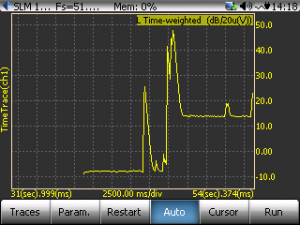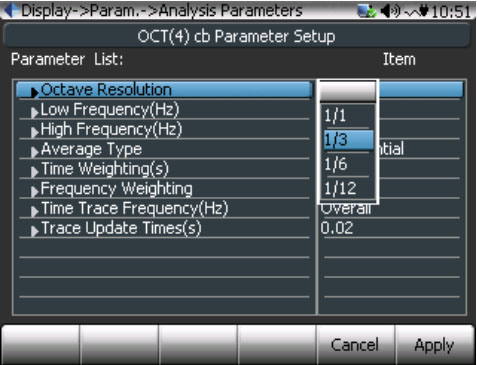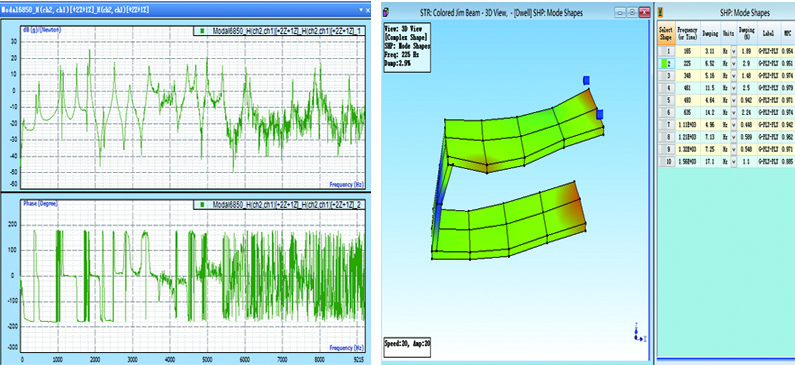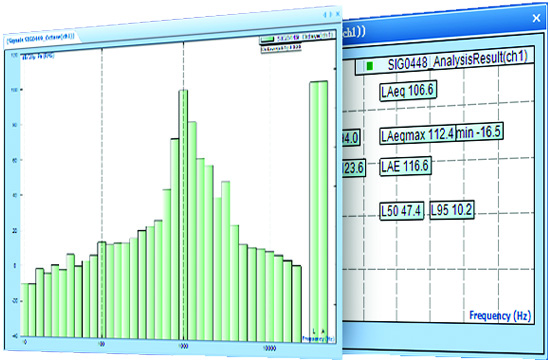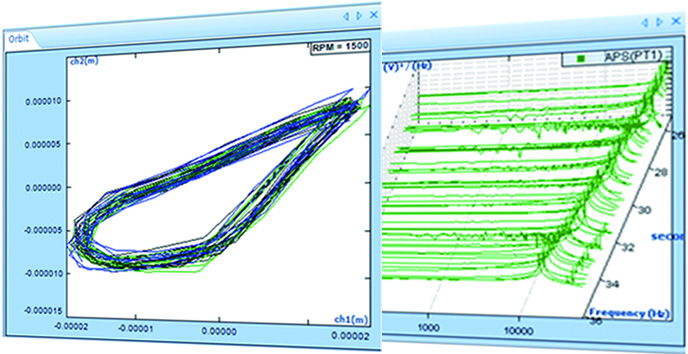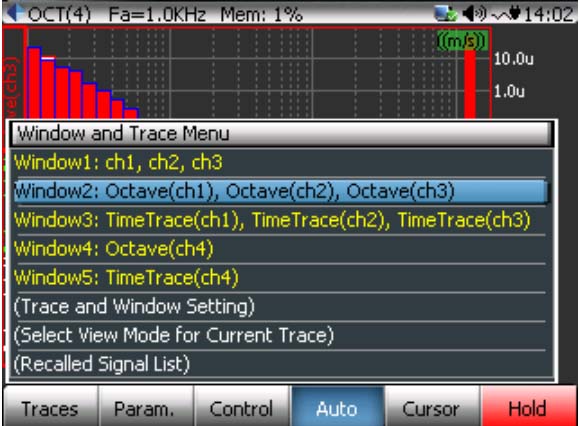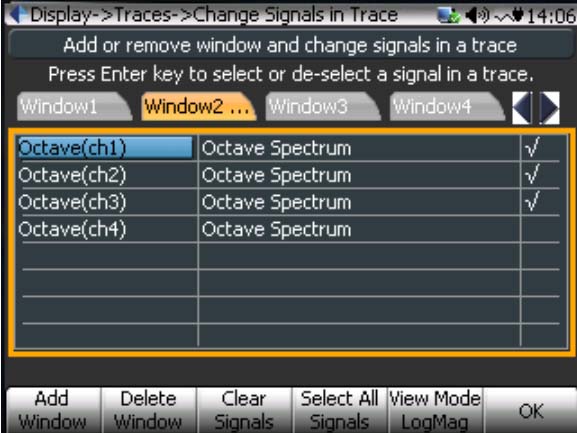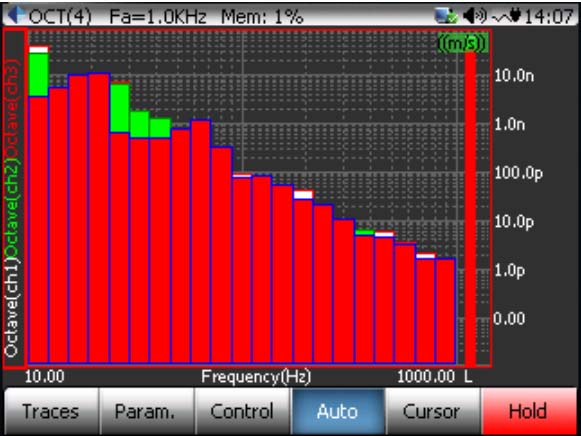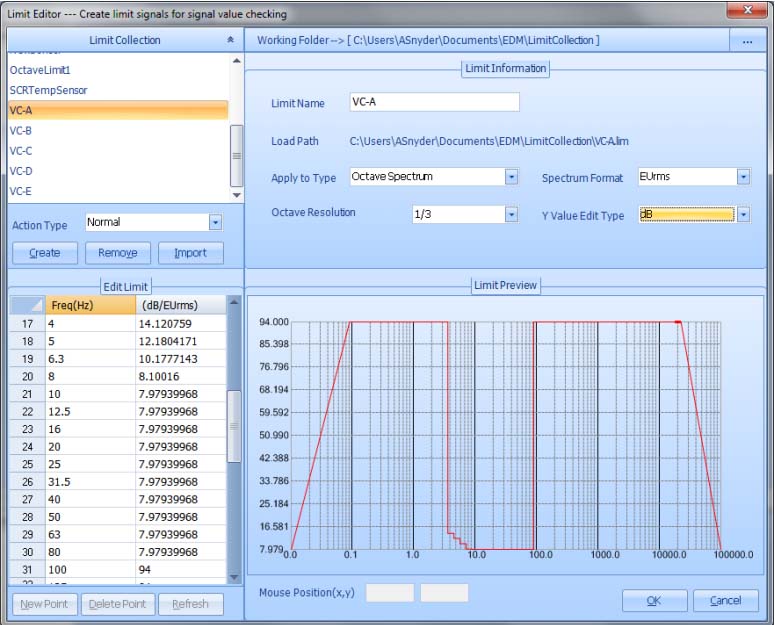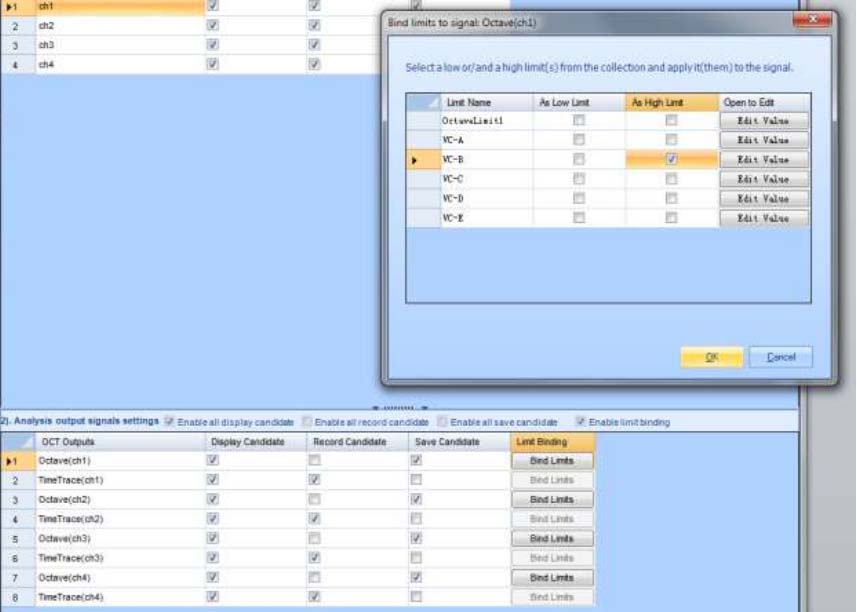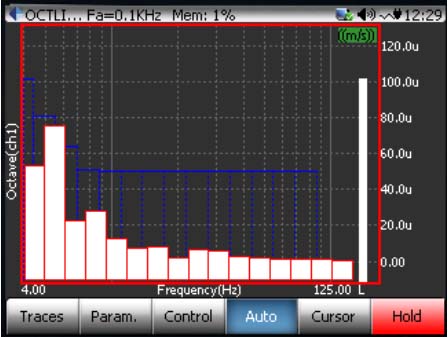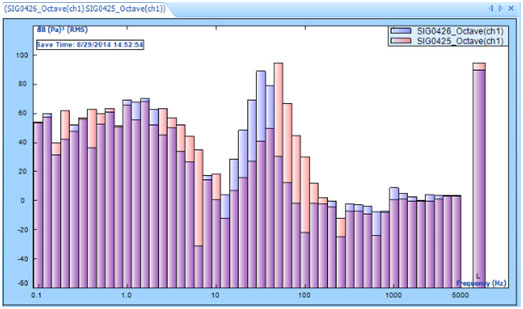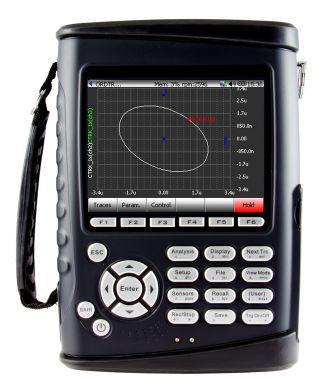The post CoCo80動態信號分析儀中倍頻程分析和聲級計測量的區別 appeared first on 杭州銳達數字技術有限公司.
]]>傳統聲級計只有 1/1 和 1/3 倍頻程濾波器。CoCo80 系統中的倍頻程分析還包含了其他分析函數, 同傳統聲級計相比,靈活性更強,計算能力更強大。
用戶需要進行分級倍頻程分析時,必須使用倍頻程分析作為模板建立 CSA 項目。在倍頻程分析和聲級計模板中,用戶都可以看到頻率加權讀數(如 dBA),但是對比倍頻程分析和聲級計測量結果,用戶會發現兩者的上述讀數有細微差別。這是因為倍頻程分析和聲級計分析的數據處理計算方式不同。例如 dBA,在倍頻程分析中是通過對單個濾波器組每個輸出應用頻率加權函數計算 A 加權聲級;然而在聲級計測量中,通過對整個時域應用 A 加權濾波器獲得 A 加權聲級。大部分的聲學研究必須使用 SLM 模板獲得 dBA 或類似讀數,其結果也可能會同傳統聲級計獲得結果進行比較,因為其計算同傳統聲級計計算方法類似。
The post CoCo80動態信號分析儀中倍頻程分析和聲級計測量的區別 appeared first on 杭州銳達數字技術有限公司.
]]>The post 模擬聲級計測量聲壓級的方法 appeared first on 杭州銳達數字技術有限公司.
]]>The post 模擬聲級計測量聲壓級的方法 appeared first on 杭州銳達數字技術有限公司.
]]>The post CoCo80的倍頻程分析參數配置有哪些? appeared first on 杭州銳達數字技術有限公司.
]]>如上圖所示,為CoCo的參數配置界面,詳細請見下面:
倍頻程分辨率:1/1、 1/3、1/6 或 1/12
最低頻率 (Hz):設置第一個頻帶的最低頻率。
最高頻率 (Hz):設置最后一個頻帶的最高頻率。
均值類型:線性、指數或峰值保留。
時間加權 (s):0.035 到 1000 秒
頻率加權: A、B、C 或 Z
時間軌跡頻率(Hz):全部、加權, 0.125 到 16000 Hz。
軌跡更新時間 (s):0.005 到 600 秒。當均值類型為線性時,確定加權時間。
用戶可以選擇時間加權參數,等效于“快速”或“緩慢”加權模式,“快速”加權模式,時間加
權常數設置為 0.125 秒;“緩慢”加權模式,設置為 1.0 秒。
The post CoCo80的倍頻程分析參數配置有哪些? appeared first on 杭州銳達數字技術有限公司.
]]>The post Spider80X動態信號分析與振動控制系統功能簡介 appeared first on 杭州銳達數字技術有限公司.
]]>Spider-80X的供電可以采用AC/DC電源,支持外部電源模塊供電。其內置的掉電保護電池,可以有效保證系統因外部電源故障而發生系統斷電。
Spider-80X動態信號分析與振動控制系統的功能有:
- 振動分析各類頻譜及相關函數
Spider采用了非常精巧的FFT算法,且為用戶提供了齊全的窗函數,平均類型及譜線選擇,最高譜線數可達64000線,強大的動態范圍不放過任何微小的信息。
Spider還為您提供了其它輔助的功能,如峰值的標定,細化分析,諧波總失真計算等,同時還提供了瀑布圖與色譜圖的顯示,以滿足不同用的需求。
實時分析功能包括:數據采集、記錄;FFT譜、功率譜、互譜;傳遞函數FRF、相干分析;RMS,+-*/等算數運算;信號發生器等。
- 結構分析(FRFS)
通過力錘或激振器進行模態數據采集時,Spider為您計算出任何一個通道和其它所有通道之間的互譜,傳遞函數和平均想干。獨立的觸發窗口給用戶提供了友好的用戶界面,讓用戶選擇是否接受本次采集。
通過EDM的數據轉換,Spider-80X的數據很容易與第三方工具結合起來,為用戶提供模態振型結構。
- 倍頻程分析與聲級計
倍頻程:Spider良好的動態范圍使其位列高端設備。基于IEC61672標準,一級的精度指標。SPider-的聲學測試包括1/N(1/1, 1/3, 1/6, 1/12)倍頻程測試,該功能應用了實時數字濾波技術,可對輸入數據應用A、B和C加權濾波器。輸出結果為加權或未加權RMS值,可以通過校準實現標準化。輸出結果可采用對數軸或線性軸描繪,支持提取或標注偏好頻率值。
聲級計:聲級是通過頻率加權濾波器和時間加權濾波器得出的,并且支持校準和顯示所有標準的聲級指標項。傳統聲級計只有1/1 和 1/3 倍頻程濾波器,同傳統聲級計相比,靈活性更強,計算能力更強大。
- 旋轉機械階次跟蹤
高精度測量分析旋轉機械的振動和噪聲,需要一個高性能的,具有合適功能的分板設備,尤其是當機械在升速和減速的過程研究。Spider-80X對于旋轉機械解決方案,為用戶推出了帶有轉子功能的聲學測試和階次跟蹤分析技術,同步階次跟蹤分析,用于轉軸的轉速發生快速變換的振動或者噪聲分析。
階次和頻率的提取:當振動或噪聲現象中包括共振、不平衡或調制等多種故障現象時,觀察和分析這些信號的一個很好的辦法就是瀑布圖。瀑布圖幫助用戶從振動中分離階次。
常帶寬跟蹤:齒輪箱產生的振動噪聲與轉速相關聯。齒輪嚙合的噪聲必須按照一個合適的帶寬進行采集。在汽車工業中,常帶寬跟蹤解決方案對于這種類型的測量來說是一個很專業的工具。
The post Spider80X動態信號分析與振動控制系統功能簡介 appeared first on 杭州銳達數字技術有限公司.
]]>The post coco80聲學數據采集和倍頻程分析功能 appeared first on 杭州銳達數字技術有限公司.
]]>分級倍頻程濾波分析對輸入時間流應用一組實時倍頻程濾波器,同時生成兩種類型的信號:1 分級頻帶信號,如倍頻程頻譜;2 每個濾波帶的 RMS 時間歷史。每個實時濾波組的輸出事實上是一個 3D 瀑布圖,其 X 軸為對數頻率,Z 軸為時間。在頻率軸上應用頻率加權;在時間軸上應用時間加權。
聲級計(SLM)同聲學數據采集中的倍頻程濾波器應用類似。該應用同時也叫做全面聲級計(Overall Level Meter)。SLM 對輸入信號應用頻率加權濾波器,對輸出信號應用時間加權,從該頻率加權濾波器的輸入和輸出信號中可以提取多個量值。
coco80具有倍頻程濾波分析、聲級計、麥克風校準功能,用戶可以通過DSA分析來完成振動噪聲測試實驗,便攜式并內置電池和內存卡,幫助您輕松完成所有測試工作。
The post coco80聲學數據采集和倍頻程分析功能 appeared first on 杭州銳達數字技術有限公司.
]]>The post CoCo80動態信號分析儀具備敏感負荷設備的振動標準(Vibration Criteria for Facilities with Sensitive Equipment)(二) appeared first on 杭州銳達數字技術有限公司.
]]>The CoCo portable signal analyzer is well suited for taking 1/3 octave vibration measurements. The Octave Analysis functions are found under the Acoustic Analysis CSA Application Group. Any of the projects title Oct() will work, with the number in
the parenthesis indicating the number of channels available.There are also CSA projects available with the vibration criteria built-in. This allows direct comparison of the measured data with the limits of a particular vibration criterion. These projects can be created in the EDM desktop software by the user, using any criteria the user selects. Setting these projects up is explained in the next section.
In an octave project, the analysis parameters are set under the F2 (Param) menu. The Octave Resolution should be 1/3, and the frequency range should be set to cover the frequency range specified by the criteria. The average type should be set based on
the expected vibration environment. For environments characterized by transient events, Peak Hold should be used, and for environments that are assumed to be steady-state over th emeasurement period should probably use Linear averaging. The
Time Weighting as well as the Time Hold settings should be set to the time duration, in seconds, of the measurement. Lastly, unless frequency weighting is specified in the criteria, the Frequency Weighting option should be set to ‘Z’.
To view the octave bands in real-time, use the F1 (Traces) button to select the window with the Octave() signals. The display windows on the CoCo can be customized to display the channel or channels of interest. To change the current window, select
Trace and Window Settings under F1 (traces). In the window setup screen, a list of signals that can be displayed will be shown, and all the ones that are currently selected for this window have a check mark in the rightmost column. To toggle the checkmark, select the row with the desired signal and press the Enter key.
Creating CSA Projects with Octave Limits
Use the CSA Editor in EDM to create Octave CSAs with limits defined. To do this, first create a new CSA by clicking the CSA Editor button in the upper right corner, and select Octave Analysis.
Then, define the limits according to the vibration criteria that will be used. Click on the Limits button on the toolbar to open the Limit Editor. All previously created limits will be shown in the upper left of the window, and a new limit can be created by
clicking the Create button. Make sure the Apply to Type is set to Octave Spectrum, and the Octave Resolution is set to 1/3. Then the limit values can be entered in the breakpoint table in the lower left.
After the limits are defined, they need to be assigned to the Octave Spectrum for each channel. The lower half of the CSA Editor screen lists the OCT outputs for each channel. Select the Enable Limit Binding option, and then for each channel click on
Bind Limits. In the Bind Limits window, enable the limit that contains the vibration criteria to be used as High Limit.
When finished, connect the CoCo-80 to EDM and press Send To CoCo. The Project can then be run on the CoCo.
To display the limits, go in to the Limit Signals Display Setting under F1 (Traces), and make sure the limit signals are enabled (shown by a checkmark in the right column). The limits will then be overlaid on the octave display.
CoCo-80應用完整案例下載:Vibration Criteria for Facilities with Sensitive Equipment?(6 pages, 415 KB)
The post CoCo80動態信號分析儀具備敏感負荷設備的振動標準(Vibration Criteria for Facilities with Sensitive Equipment)(二) appeared first on 杭州銳達數字技術有限公司.
]]>The post 聲學測試與分析 appeared first on 杭州銳達數字技術有限公司.
]]>聲學分析中有兩項研究內容,包括分數倍頻程濾波器分析,聲級計。
分數倍頻程濾波器分析功能適用一堆實時的1/nth倍頻程濾波器到輸入時間流,并在同一時間產生兩種類型的響應:1/Nth倍頻程的譜,并且每個1/Nth倍頻過濾帶的RMS時間歷史。每個實時濾波器組的輸出是實際上是一個三維瀑布圖信號,由X軸做對數頻率,Z軸是時間組成。頻率加權是應用在頻率軸而時間加權是應用在時間軸。
聲級計 (SLM) (也叫做總極計) , 聲學數據采集期間也使用倍頻程濾波器。SLM應用一個頻率加權濾波器到輸入信號,時間加權到輸出。多種測量然后從該頻率加權濾波器的信號輸入和輸出中提取。
在聲學測試與分析中,銳達公司一般向客戶推薦CoCo-80/90這款產品,良好的動態測試范圍使它位列高端設備,內置電池,重1.7kg,方便攜帶,集數據采集、信號分析為一體,支持SD卡擴展與數據保存。
The post 聲學測試與分析 appeared first on 杭州銳達數字技術有限公司.
]]>